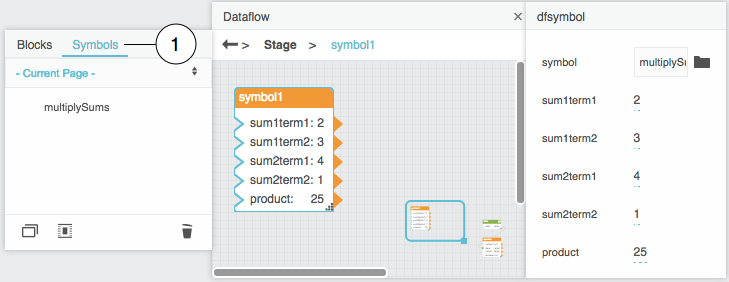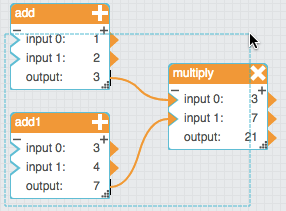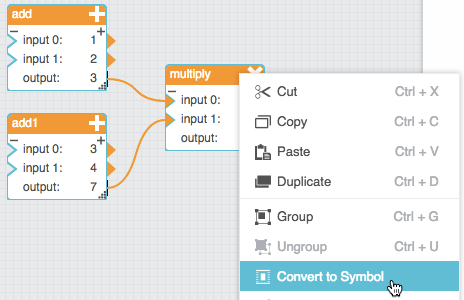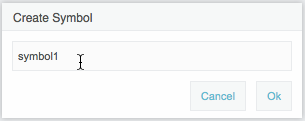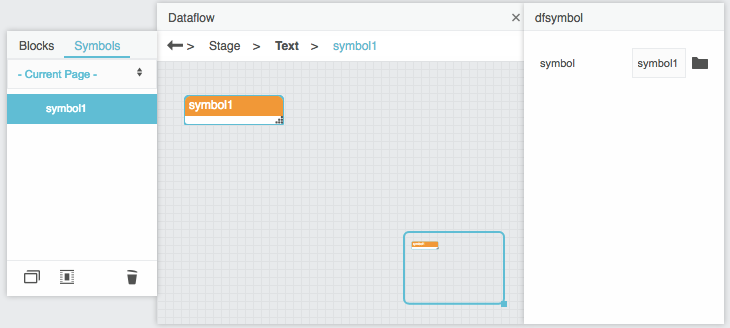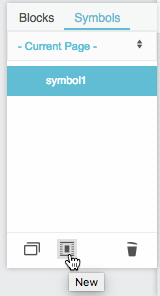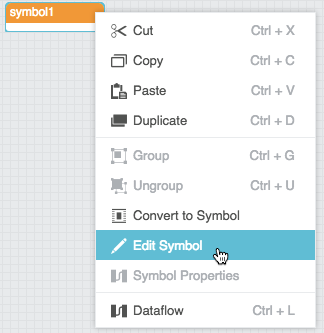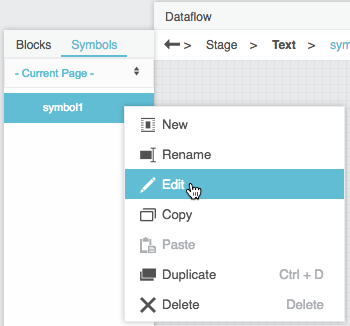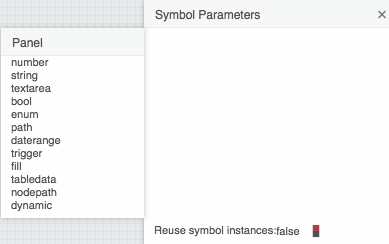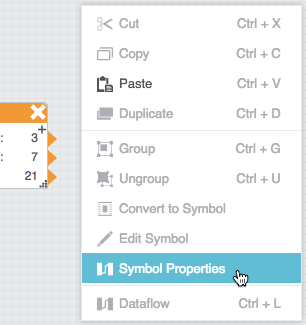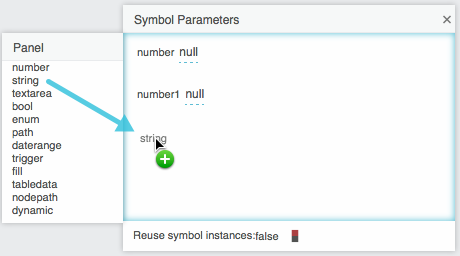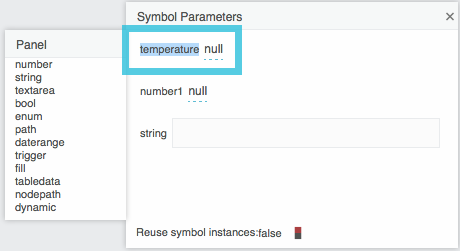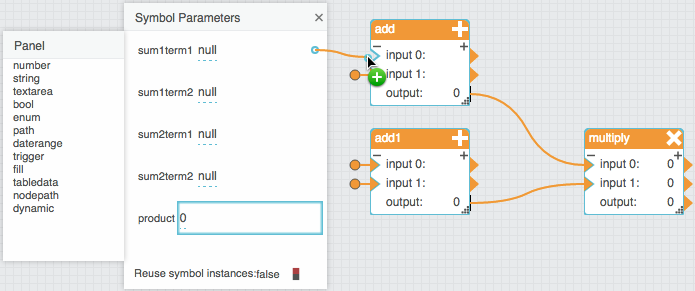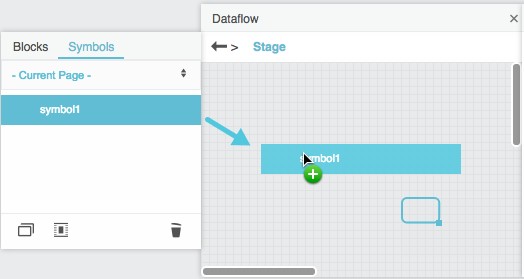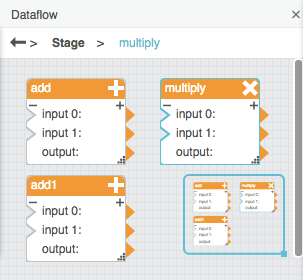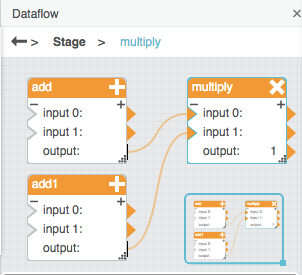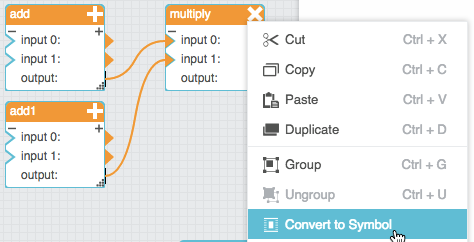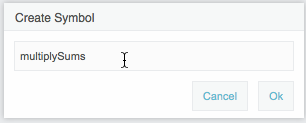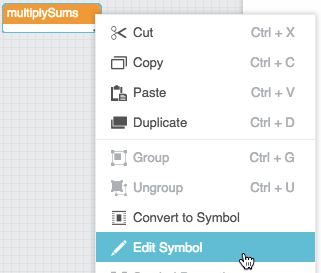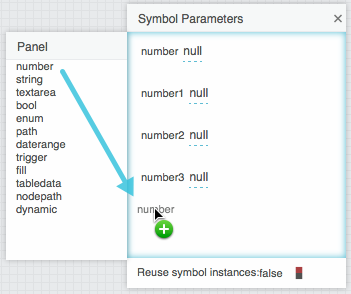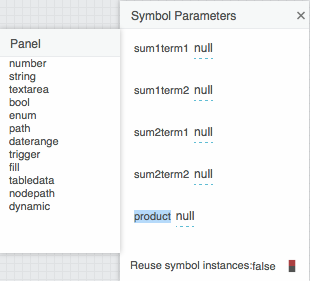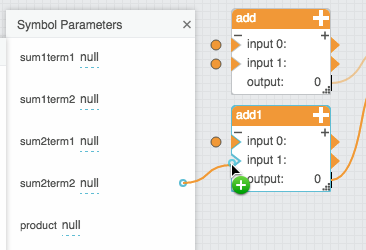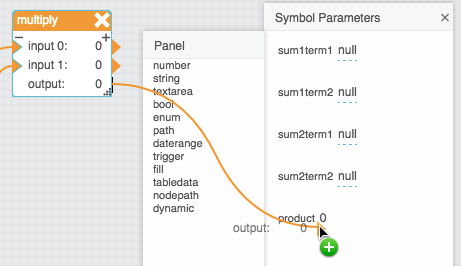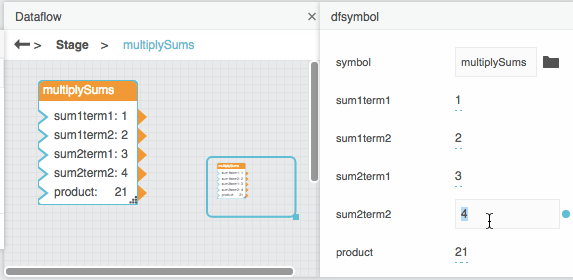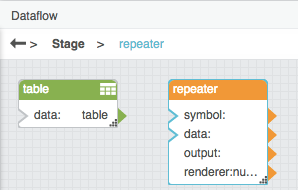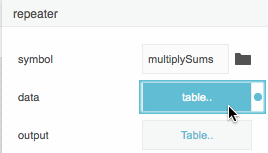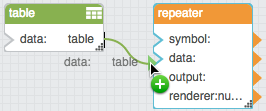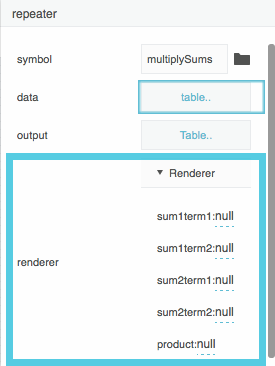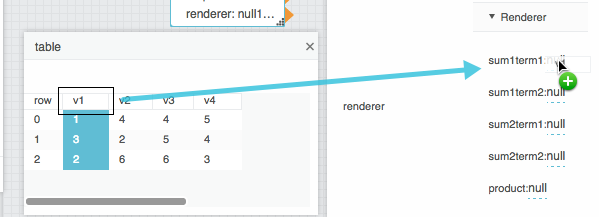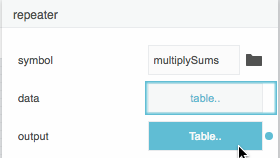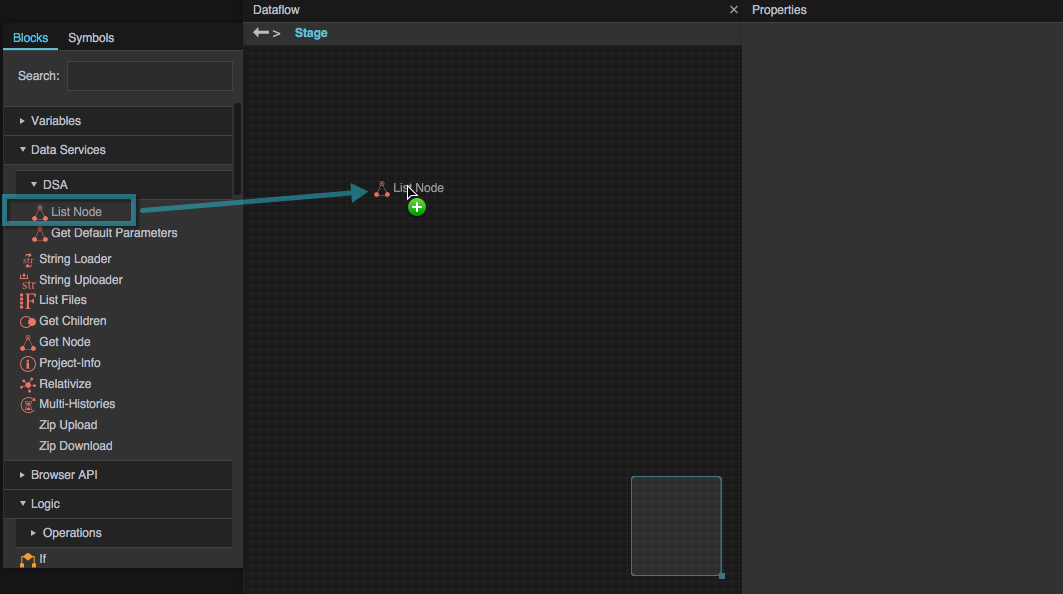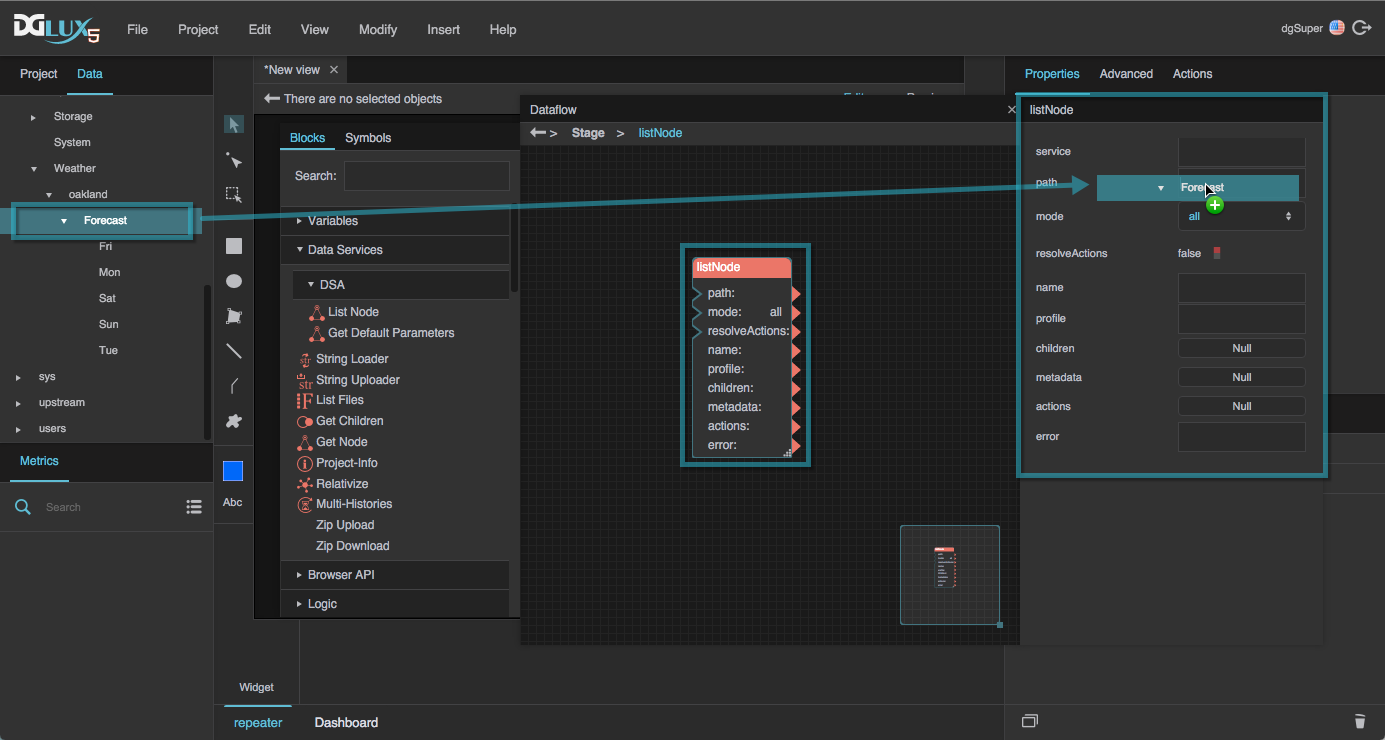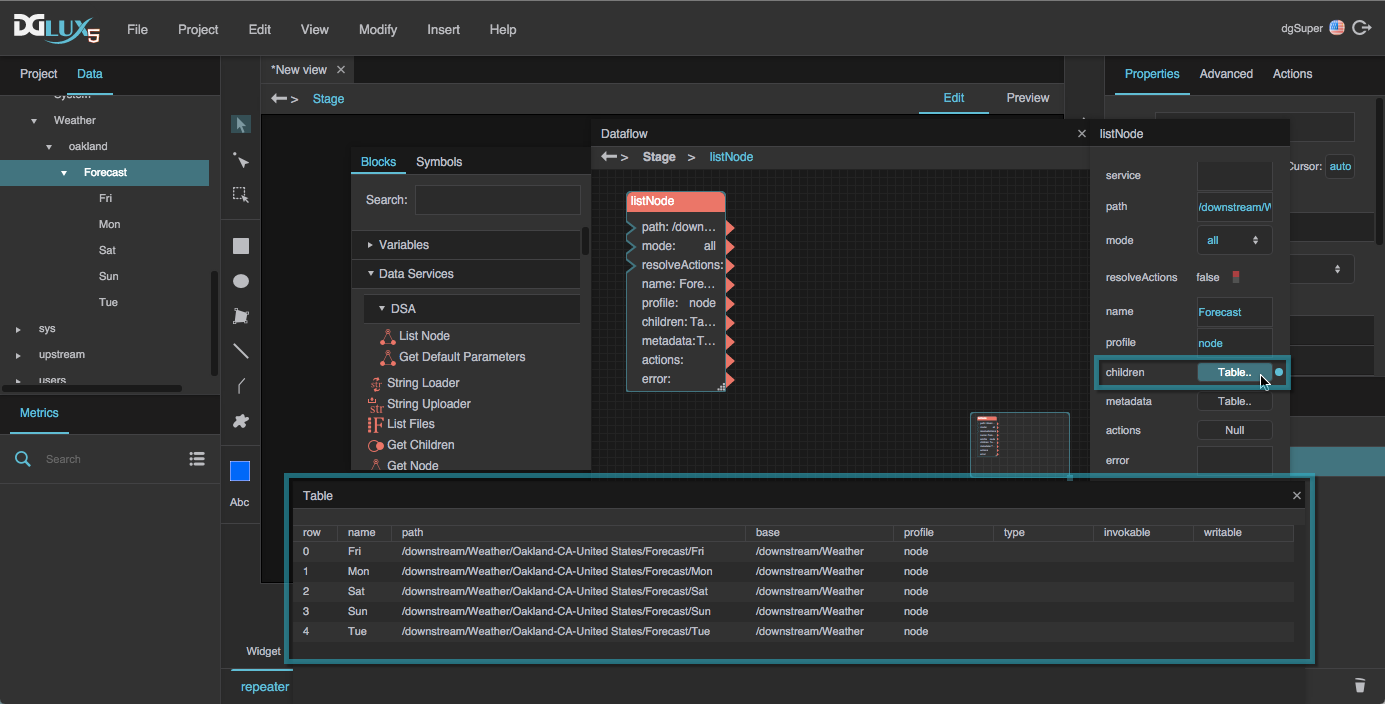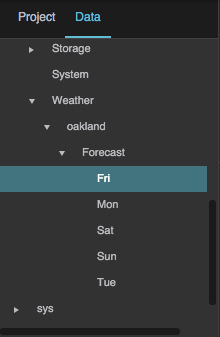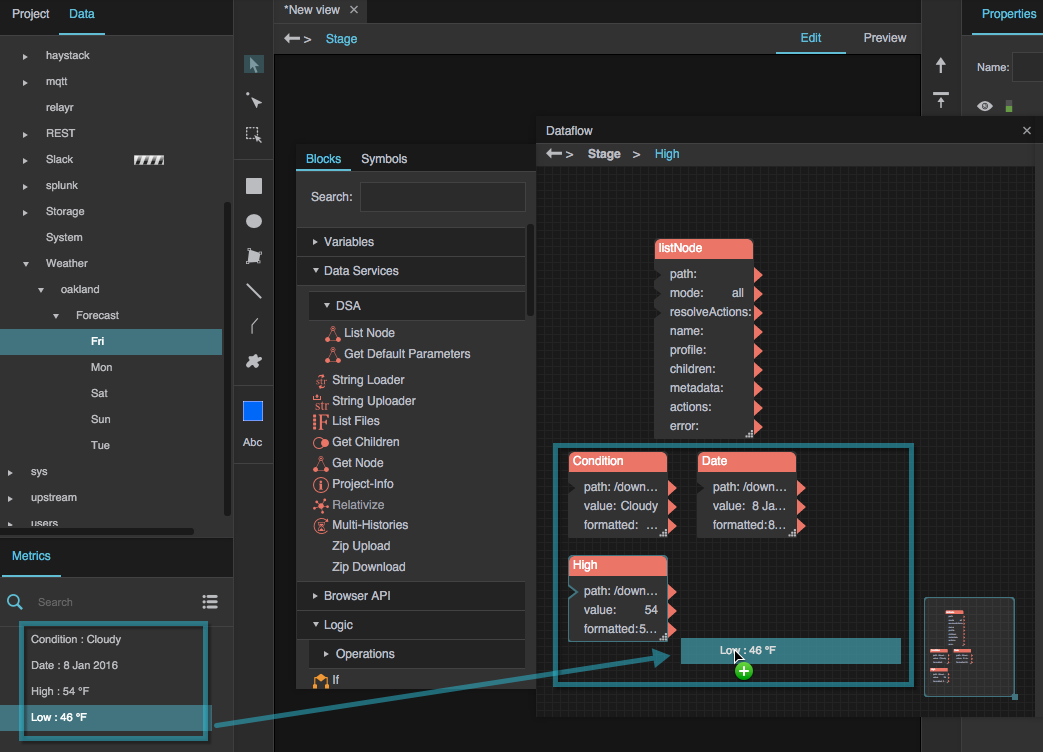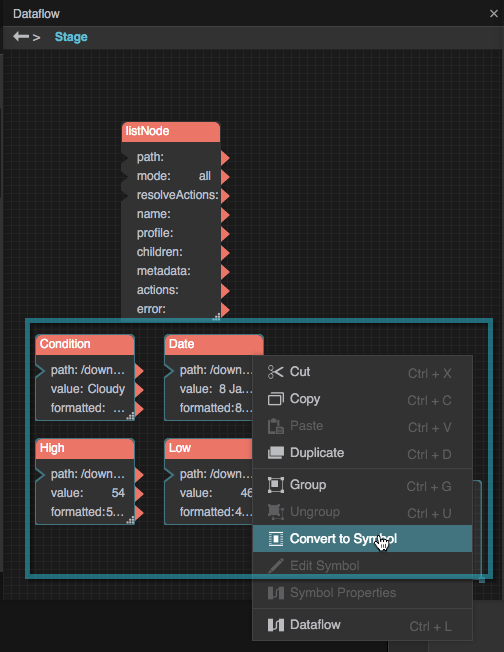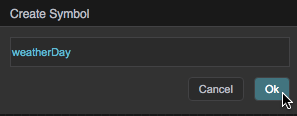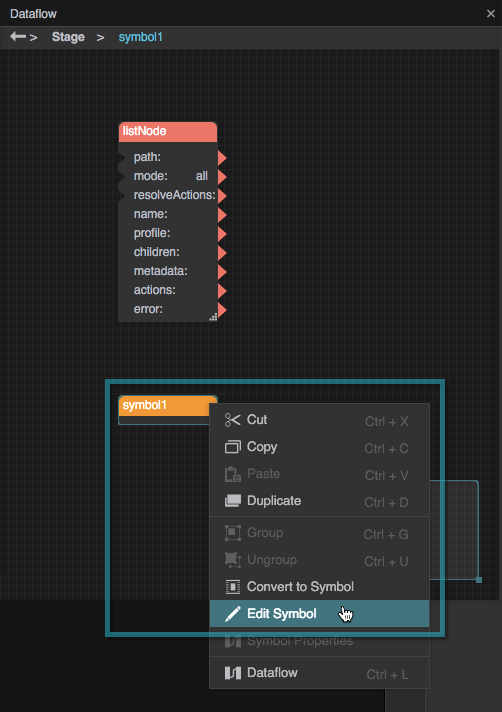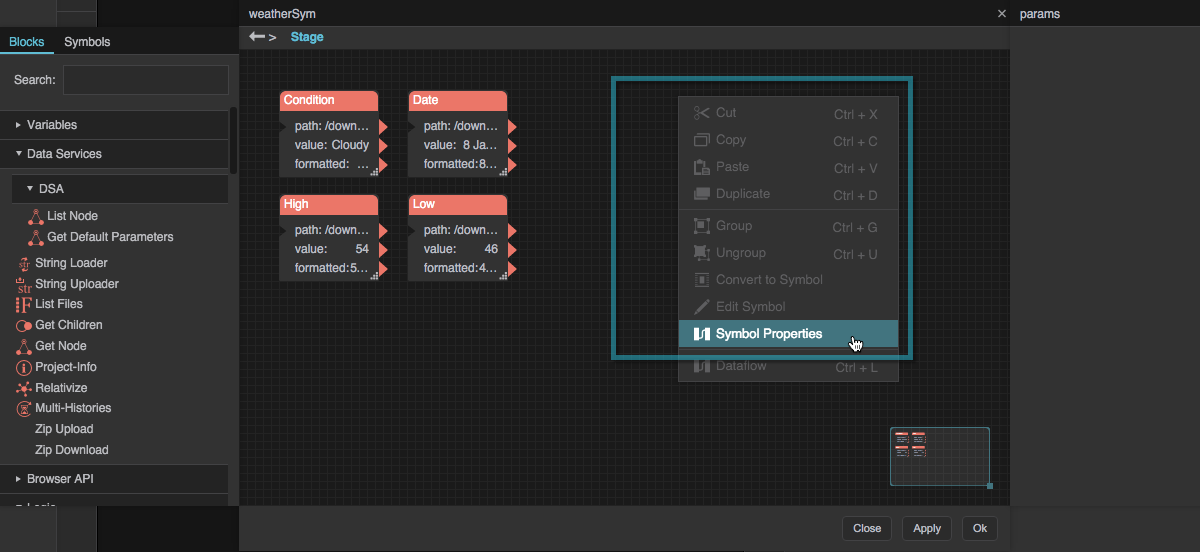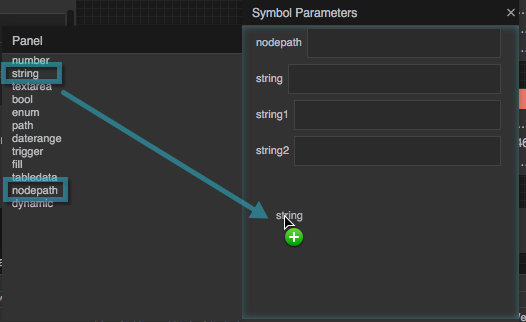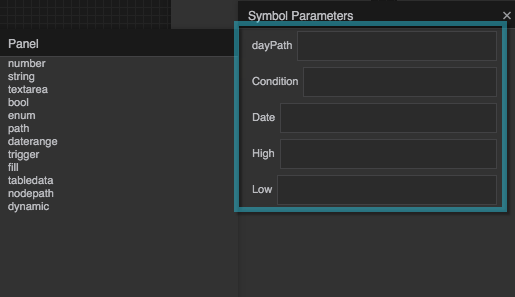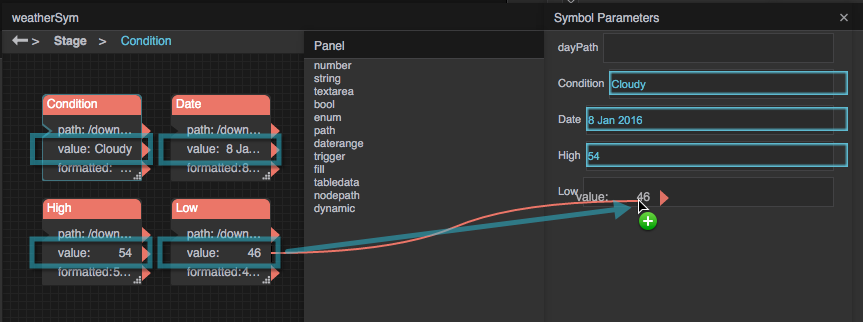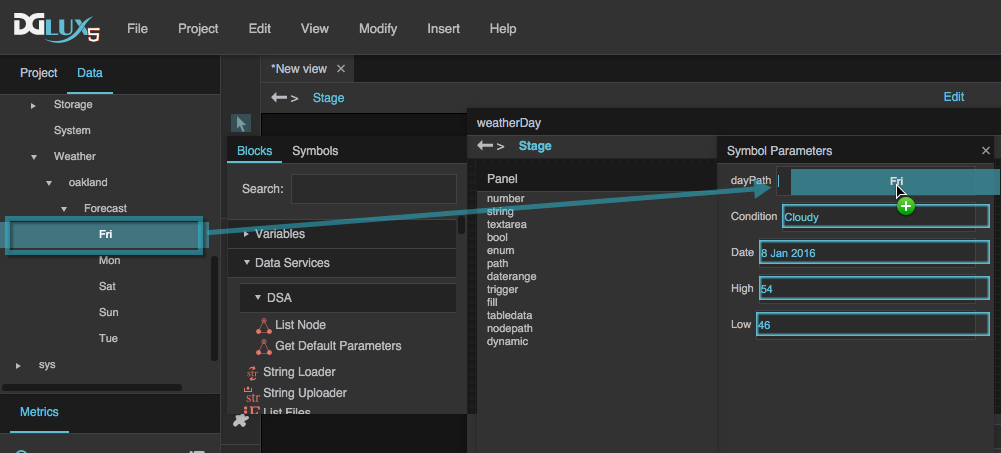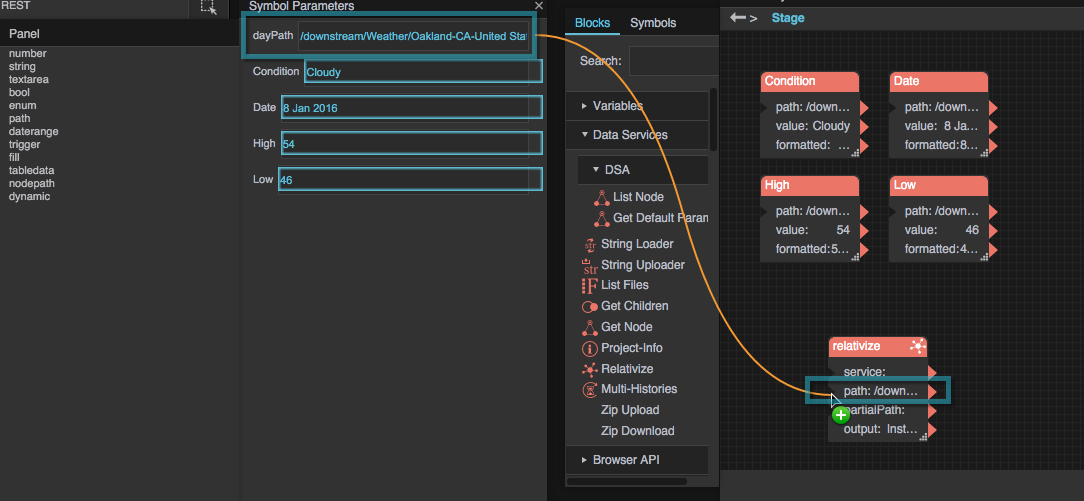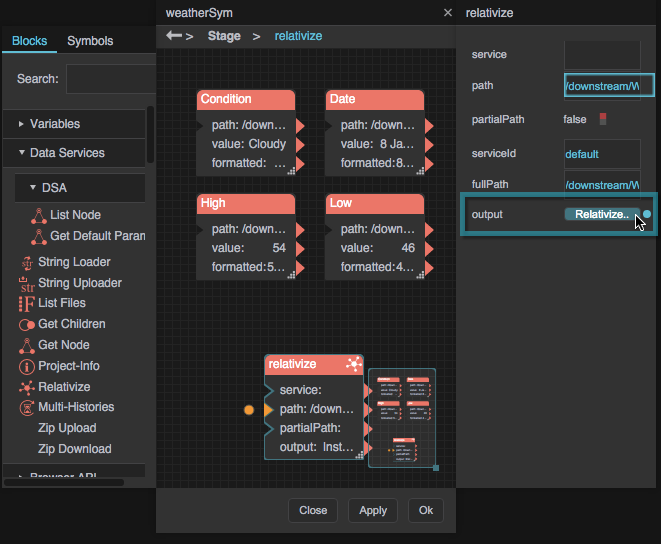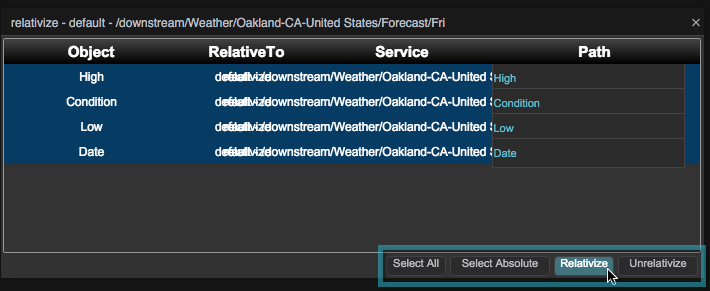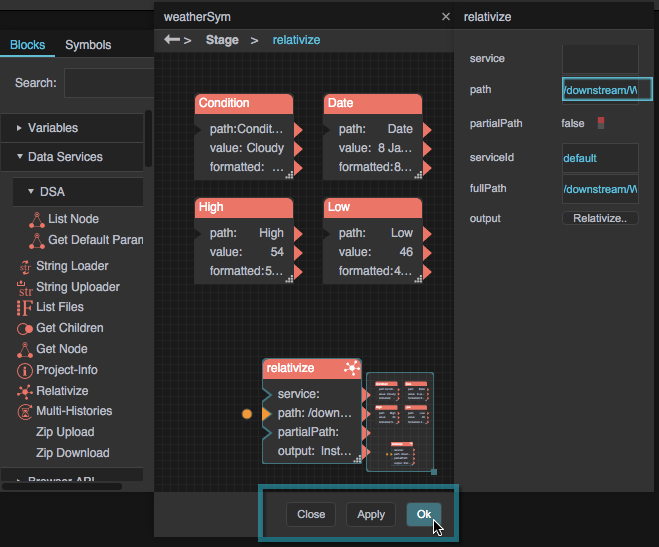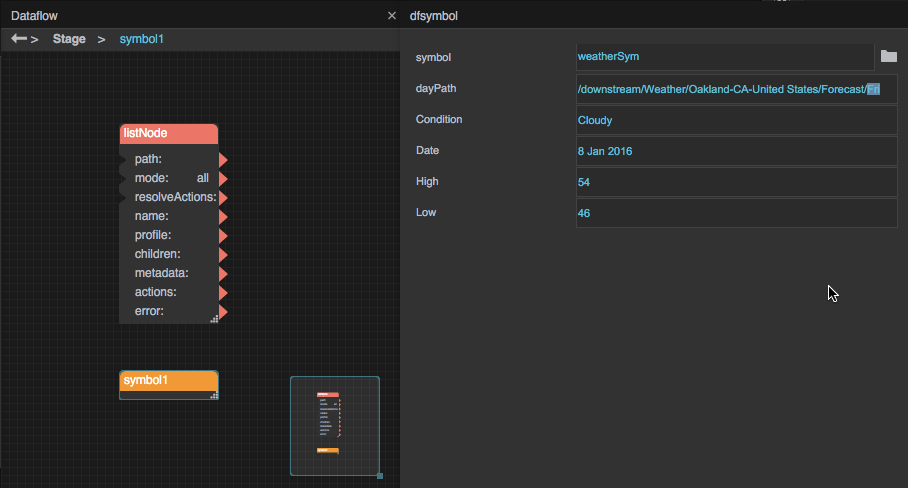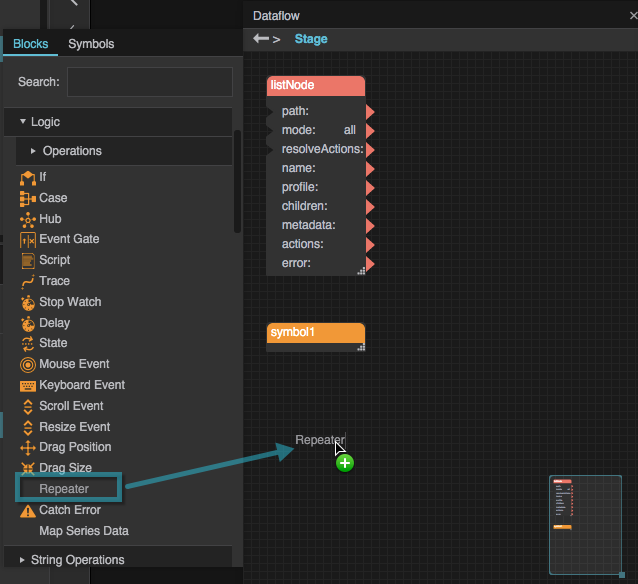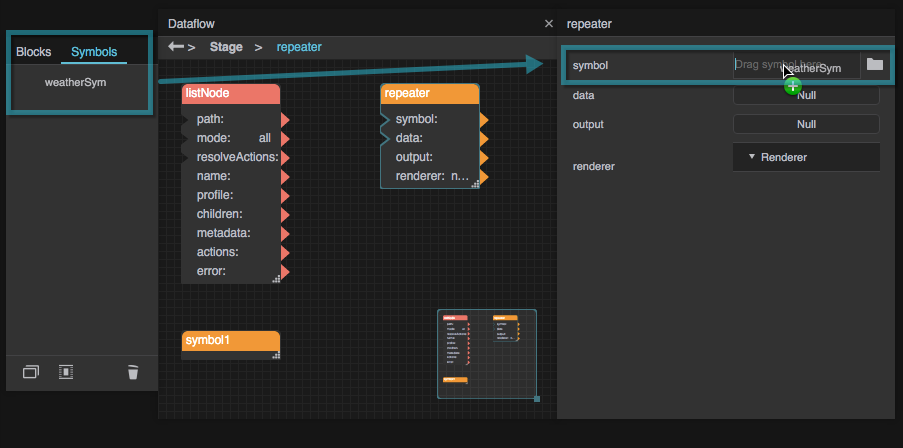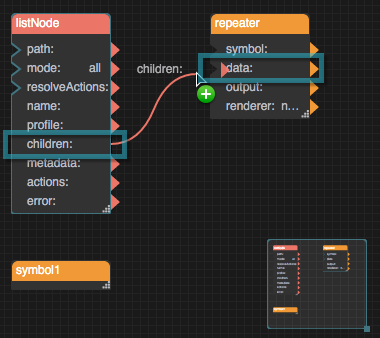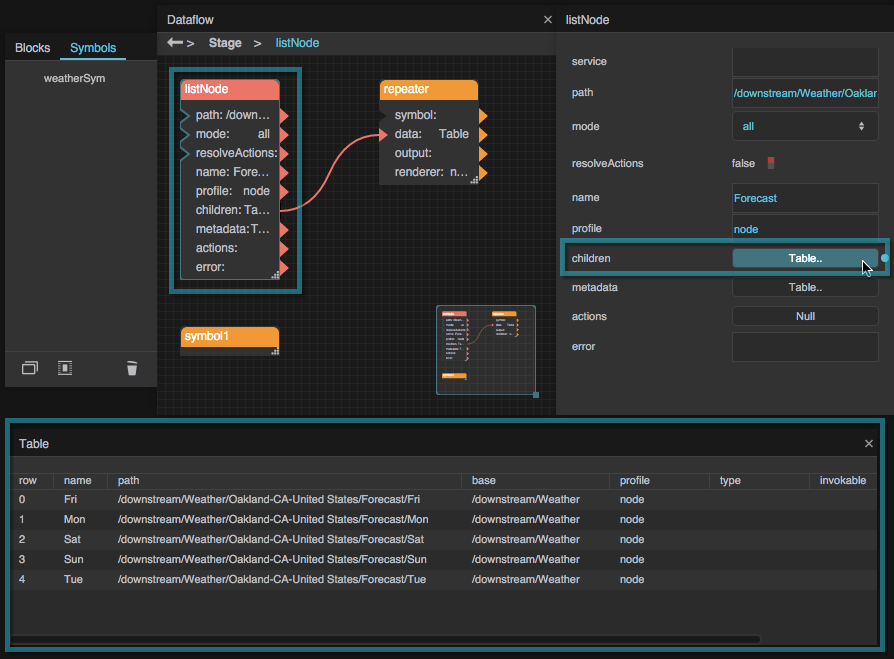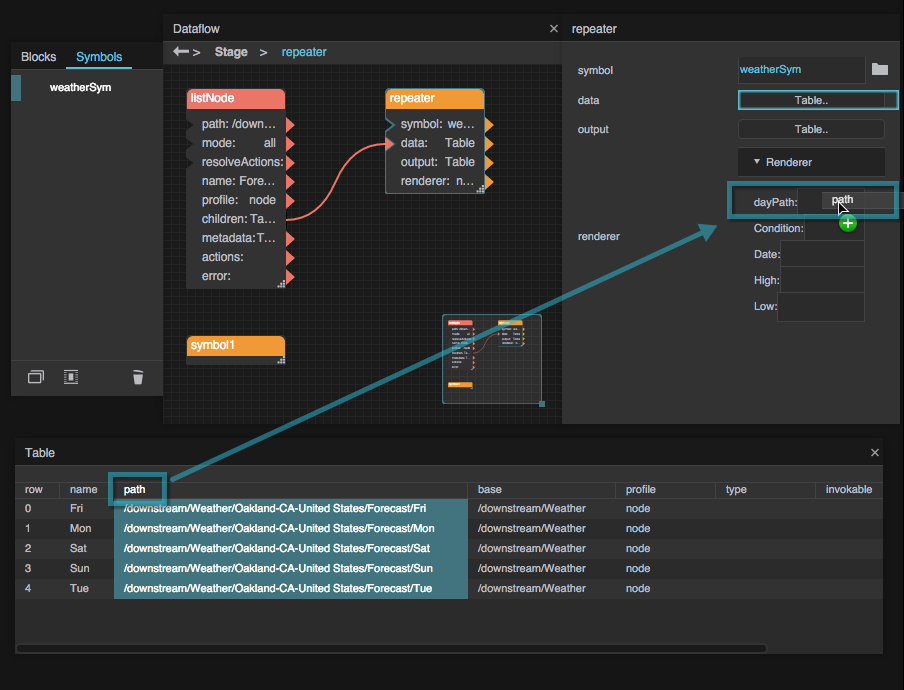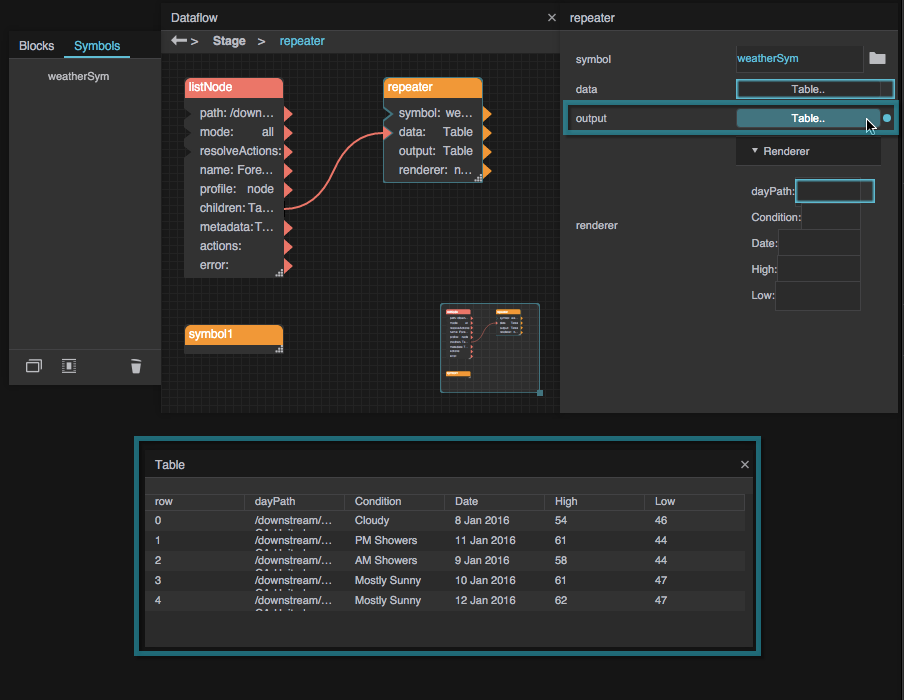Dataflow Symbols and Dataflow Repeaters
This page describes dataflow symbols and dataflow repeaters in DGLux5 and includes basic operations and tutorials.
A dataflow symbol is a dataflow model without a parent object. You access existing dataflow symbols in the symbols panel of the dataflow. The symbols panel is located in a tab next to the block palette. The following image shows the location of the symbols panel.
| 1 | Symbols panel |
After you create a dataflow symbol, you can add instances of that symbol to dataflow models. A symbol instance is a single dataflow block that represents the symbol. Instances of a symbol are identical to one another except where affected by symbol parameters that you create. If a symbol does not have parameters, all of its instances are identical.
You can edit a symbol, or you can edit a symbol instance. Changes to a symbol affect all instances of the symbol. Changes to a symbol instance affect only that instance. Only the following aspects of a symbol instance can be edited.
- Position and size
- Page code name and block label
- Which properties are pinned and unpinned
- Parameter values
A dataflow repeater is a Repeater block. A Repeater block takes a table and a dataflow symbol as input. Then, the Repeater block returns an output table that describes parameter values of the input symbol for each row of the input table.
How to Create a Dataflow Symbol
You can create a new dataflow symbol in two ways.
How to Create a New Dataflow Symbol via Block Conversion
To create a new dataflow symbol:
- Add blocks to any dataflow model.
How to Create a New Dataflow Symbol via the Symbols Panel
To create a new dataflow symbol and also enter symbol editing mode for that symbol:
- Make sure the symbols panel, not the block palette, is selected.
How to Edit a Dataflow Symbol
You edit a dataflow symbol in symbol editing mode for that symbol. When you are in symbol editing mode, the dataflow view contains the dataflow model for the symbol, and three buttons appear that let you close, apply, or save the current dataflow model. These buttons appear only in symbol editing mode. The following image shows symbol editing mode.
| 1 | Symbol editing mode buttons |
If you are in symbol editing mode for multiple symbols simultaneously, the dataflow view for each symbol appears in a separate floating panel.
While in symbol editing mode, you can make two kinds of changes. The first kind of change affects the symbol dataflow model. The second kind of change exposes and manages symbol parameters.
Symbol parameters appear as block properties for symbol instances. These properties behave like other dataflow block properties, in that the property values can be different for each symbol instance. All symbol instance properties are unpinned by default.
Notes
- You always must click OK to save changes. Changes to a dataflow symbol are not saved automatically when you leave symbol editing mode.
- While you are in symbol editing mode for a dataflow symbol, you can click Apply to temporarily apply changes to all symbol instances. If you click Apply but do not click OK, your changes are lost when you exit symbol editing mode.
How to Enter Symbol Editing Mode
The following interactions enter symbol editing mode for a dataflow symbol:
- Right-click a symbol instance in the dataflow window, and choose
 Edit Symbol.
Edit Symbol. - Right-click a symbol in the symbols panel, and choose
 Edit.
Edit. - In the symbols panel, click the
 New icon, and then specify a name for the new symbol.
New icon, and then specify a name for the new symbol.
The following image shows how to enter symbol editing mode via the dataflow window.
The following image shows how to enter symbol editing mode via the symbols panel.
How to Edit a Symbol Dataflow Model
Changes made to a symbol dataflow model affect all instances of that symbol.
To edit a symbol dataflow model:
- Make sure you have entered symbol editing mode.
Edit the dataflow model.
For example, you can do the following:
- Add blocks.
- Rename, move, and delete blocks.
- Edit block properties.
- Create and delete bindings.
- If you want to temporarily apply your changes to symbol instances, click Apply.
- Always click OK to save changes.
How to Edit Symbol Parameters
Symbol parameter values can be different for each symbol instance.
You create parameters using a Symbol Parameters pop-up. The leftmost portion of the Symbol Parameters pop-up contains data types that you can add to a symbol. The rightmost portion of the Symbol Parameters pop-up contains the parameters of the current symbol. The following image shows the two portions of the Symbol Parameters pop-up.
To define parameters:
- Make sure you have entered symbol editing mode.
- Always click OK to save changes.
How to Add a Dataflow Symbol Instance
To add a dataflow symbol instance to a dataflow model:
- Open the dataflow model.
- Make sure the symbols panel, not the block palette, is selected.
- Find the symbol name in the symbols panel.
Dataflow Symbol and Repeater Tutorials
These examples show you how to create some simple dataflow symbols and dataflow repeaters.
Tutorial: Multiplication Dataflow Symbol
This example shows you how to create a simple dataflow symbol that multiplies two sums.
- Open any dataflow model.
- Select all three dataflow blocks.
- Edit the labels of the five parameters to the following labels:
sum1term1sum1term2sum2term1sum2term2
Bind the first four symbol parameters to the input properties of the Add blocks.
- Click OK to exit symbol editing mode.
In the dataflow window, select the multiplySums symbol instance.
The parameters of the multiplySums symbol appear in the block properties panel.
- To cause properties to appear in the visual block in the dataflow window, pin the properties.
Tutorial: Multiplication Dataflow Repeater
This example uses the dataflow symbol created above to create a simple dataflow repeater.
- Create the multiplySums dataflow symbol as described above.
- Open any dataflow model.
Add a Table block and a Repeater block to the dataflow model.
Edit the table so that the table contains four columns of numbers.
Bind the data property of the Table block to the data property of the Repeater block.
Tutorial: City Weather Tracking Dataflow Symbol
This example shows you how to create a dataflow symbol that combines data collected by Load Value blocks. This particular example requires the DSA Weather DSLink. To connect to the Weather DSLink, follow the steps in Access DSLink data.
- Open any dataflow model.
In the Data panel, find downstream > Weather > <city> > Forecast. With the List Node block selected, drag the Forecast node to the path property.
Drag each of this node's metrics from the Metrics panel to the dataflow window.
- Name the properties as follows:
dayPathConditionDateHigh
Bind the value properties of the List Node blocks to the string symbol parameters.
Add a Relativize block to the symbol editing window.
If you want, you can pin properties so that they will visually appear in the block.
Tutorial: City Weather Tracking Dataflow Repeater
This example uses the weatherDay symbol to create a dataflow repeater.
If you used non-DSA data to create the symbol, use the output property of the Get Children block instead of the children property of the List Node block.
- Create the
weatherDaydataflow symbol as described above. Select the List Node block that you created when you made the
weatherDaysymbol, and bind the children table to the data property of the repeater.
